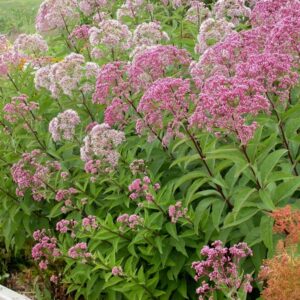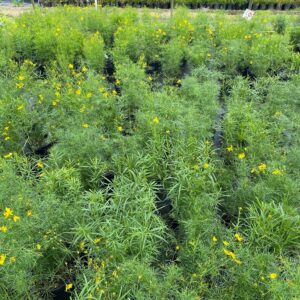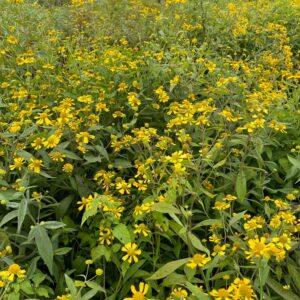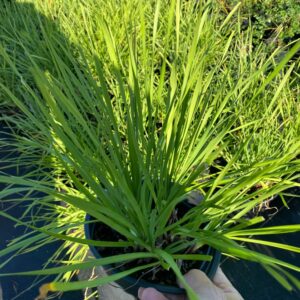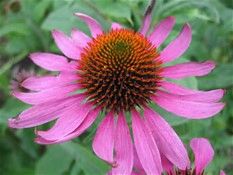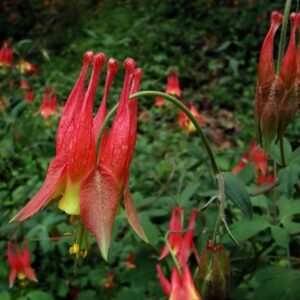- Ph: (631) 801-2855
- All Visits by Appointment Only
- info@linatives.com
- My Account
Verbena hastata is a perennial which commonly occurs in wet meadows, wet river bottomlands and stream banks. It is a rough, clump-forming perennial with a stiff, upright habit which typically grows 2-4′ tall (less frequently to 6′) on square hairy stems which typically branch above. Features candelabra-like inflorescences of erect, slender, pencil-like spikes (2-6″ long) of tiny, tubular, 5-lobed, densely-packed, purplish-blue flowers (1/8″ wide) which appear over a long July-September bloom period. Flowers on each spike bloom bottom to top, only a few at a time. Lance-shaped, sharply toothed, green leaves (to 6″ long).
Easily grown in average, medium to wet soils in full sun. Typically forms colonies in the wild by both thick, slowly spreading rhizomes and self-seeding. May self-seed in gardens in optimum growing conditions.
Straight Species
$9.99
Please note: Most pictures represent mature plants. Unless otherwise specified, all of our plants are sold in 4″ pots to make shipping possible and will mature in time.
Learn more about how the process works and how our plants are delivered.



| Size | 1 Quart |
|---|---|
| Native | |
| Wetland Indicator | |
| Moisture | |
| Sunlight | |
| Special Attributes | Bee Attractor, Bird Attractor, Butterfly Attractor, Deer Resistant |
Verbena hastata is a perennial which commonly occurs in wet meadows, wet river bottomlands and stream banks. It is a rough, clump-forming perennial with a stiff, upright habit which typically grows 2-4′ tall (less frequently to 6′) on square hairy stems which typically branch above. Features candelabra-like inflorescences of erect, slender, pencil-like spikes (2-6″ long) of tiny, tubular, 5-lobed, densely-packed, purplish-blue flowers (1/8″ wide) which appear over a long July-September bloom period. Flowers on each spike bloom bottom to top, only a few at a time. Lance-shaped, sharply toothed, green leaves (to 6″ long).
Easily grown in average, medium to wet soils in full sun. Typically forms colonies in the wild by both thick, slowly spreading rhizomes and self-seeding. May self-seed in gardens in optimum growing conditions.
Straight Species
